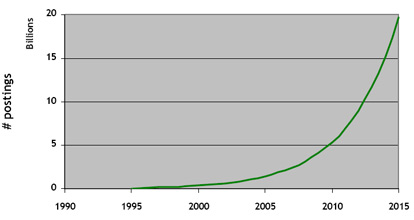In a time where consumers have become more daring and straightforward it’s hard for marketeers to gain control over the complete cycle of the products they market. With the ubiquitousness of media channels, consumers are finding new ways to push through their values, to set up rules, to protest against certain forms of marketing. It is with these last thoughts in mind that the Ogilvy office in Brussels had organized a ‘Blogstorm’ where it wanted to find out more about the perspectives of a blog in a marketing strategy, about blogs as a tool to gain more control on the process of the brand-awareness or to really stay close to your target groups. Blogs and marketing, a blogger’s view.
In short : Ogilvy? C’est quoi?
Ogilvy is a member of the WPP Group plc, one of the largest communication services companies in the world. There are more than 60 companies in the group, including J. Walter Thompson, Hill and Knowlton, Ogilvy Public Relations, Millward Brown, Research International, Mindshare, and Enterprize IG.
Through the WPP family, Ogilvy has access to top-rated expertise in the communications spectrum, such as design, research, public relations, identity, retail marketing, sales promotion and new media.
New media includes internet. Blogging just lately became a considerably big part of the internet, as Marco Derksen from Marketingfacts has explained. Interesting fact is that Marco doesn’t refer to blogs as being ‘blogs’ but instead, seen in a marketing context, he uses the term Consumer Generated Media. This is because in fact that is exactly what bloggers do, and why blogs are ‘here’. It’s a channel for consumers to communicate with the world. And aren’t we all consumers? Don’t we (as bloggers) generate text, sound or images that become published on the internet? Yes we do.
We are broadcasters of our own opinion, and to many marketeers that has become a scaring reality. Control is no longer fully in the hands of the producers, of the recommender. We, the people, have taken over. The game is the same, but the rules have changed. A suited approach becomes needed, wanted… desired. New channels of communication between producer and consumer cause marketeers to look for a different approach. A more cautionous approach.
Blogging is a revolution. A recent investigation by Forrester & Intelliseek published in june 2005, reveals following statistics (taken from Marco’s presentation) :
 Â
Â
At this time, there’s about 1.4 billion postings a year (including comments), there’s an exponential growth active, with a rate of 30%, meaning that by 2015, 20 billion of postings will be made yearly by bloggers and commenters . The consequences are quite obvious. Consumers will have to be treated with care and respect, or many people will know about it. A good example of this is the Dell Case, in which some very bad customer service from Dell’s part had resulted in a posting on a blog, that got picked up internationally. Bad publicity at its best.
Dell is making a big mistake in the policy they conduct at this time. Currently, what they have is explained in a talk Dwight Silverman of the Houston Chronicle had with Jennifer J. Davis, a spokesperson in Dell’s consumer products group. [Click here for that talk]
Regarding the negative publicity in the Jeff Jarvis story, he asked Davis about how Dell deals with ‘internetfuzz’ in general. Here’s a quote that says it all :
“It’s a policy of look, don’t touch — those monitoring do not respond publicly, nor do they try to make contact pro-actively. The best process for getting issues addressed is to contact us directly,” [...] “With our direct model, we feel like we already have a good, two-way communications channel with our customers.“
… Well. That says it all. Obviously over at Dell’s, marketeers are too blind to see the influence bloggers can have on a brand and its related products. Some crisis-PR, anyone? This needs to be prevented. There must be a way to approach consumers, to have a dialogue with and to be able to please consumers. There is a way to prevent this. It’s by means of a blog, but you’ve got to be careful…
So at Ogilvy’s, two discussions where at hand.
The first one was about the why’s and why nots of corporate blogging. Should every company own a blog? Is that necessary? Who should blog? What should be blogged? What about the competition?
The second discussion was about the ethics of marketing blogs. About the use, the history and the future of product placement through blogposts, about advertisement blogging and the use of editioral advertisement… this resulted in a change of thoughts about what’s tolerable and what’s not, and in a stream of ideas about the hows of blogging from a corporate point of view and a consumer’s point of view.
So far for the situational post. This is the context that explains Ogilvy’s reason for calling a meeting with a core of bloggers and marketeers, in order to prevent bad internet experiences with branding campaigns. In order to be able to use blogs for marketing purposes, without having to bear the wrath of the blogging community because of an unsuited approach.
The next posts will be about what was said.
Relevant links for this issue :
Posts online from other participating bloggers :
Introduction by [Franky] from Ogilvy
Maarten Schenk from SixApart : [One] – [Two] – [Three]
[Marco from Marketingfacts] the moderator/narrator
Smetty from Doppler and the Edublogs : [Podcast online soon]
Bart from [Netlash] unleashed
[Polskaya] about Marketing and CGM
[Hans on Experience]